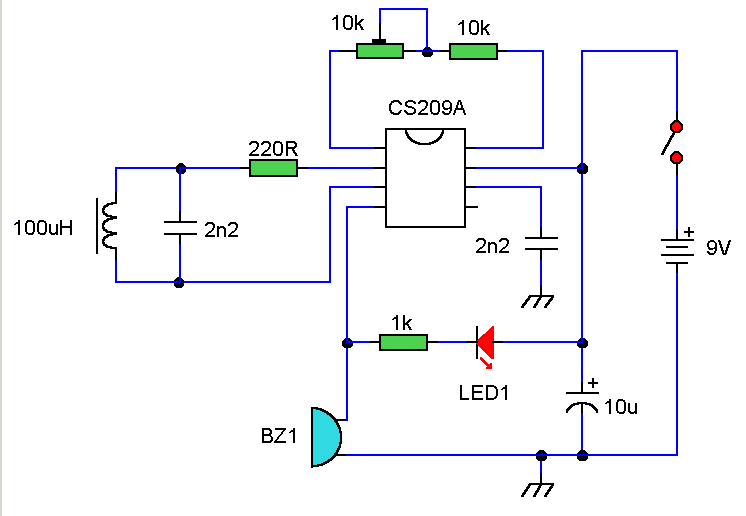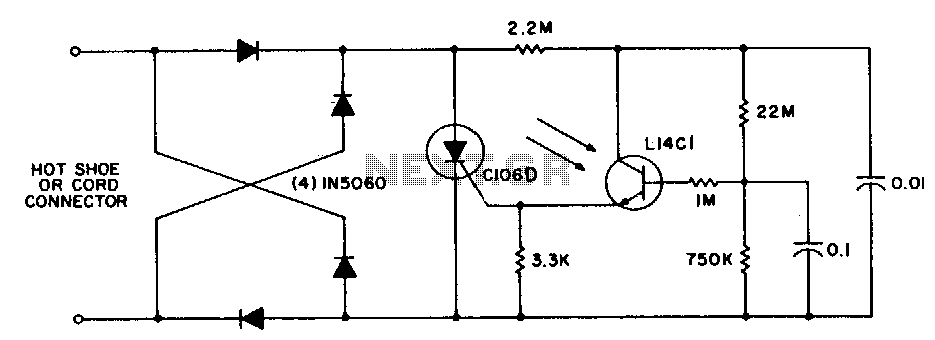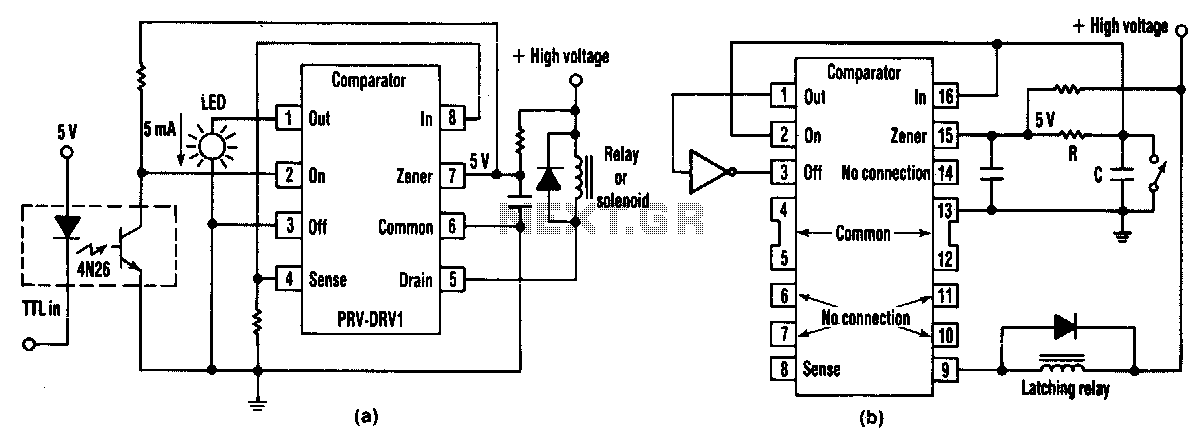
xenon lamp flash detector

This circuit is a xenon lamp flash detector. It has a very low standby current requirement yet has very high sensitivity toward the light flashes from a xenon lamp. When connected to a flip-flop, it can serve as an on/off controller.
The xenon lamp flash detector circuit is designed to detect the intense light flashes emitted by xenon lamps, which are commonly used in photography and high-intensity lighting applications. The circuit operates with a low standby current, making it energy-efficient while maintaining high sensitivity to light flashes.
At the core of the circuit, a photodetector, such as a photodiode or phototransistor, is employed to capture the light emitted by the xenon lamp. Upon detecting a flash, the photodetector generates a small electrical signal. This signal is then amplified by a transistor or operational amplifier to ensure it reaches a sufficient level for further processing.
The output of the amplification stage can be fed into a flip-flop circuit, which serves as a bistable multivibrator. This configuration allows the circuit to toggle between two states (on and off) based on the input signal from the photodetector. When a flash is detected, the flip-flop changes its state, which can be used to control other devices or indicate the presence of the flash through an LED or other output indicators.
Key components of this circuit include a power supply, the photodetector, an amplifier stage, the flip-flop, and output indicators. The circuit design should also incorporate necessary resistors and capacitors to stabilize the operation and filter out noise, ensuring reliable performance in various lighting conditions.
Overall, this xenon lamp flash detector circuit is a practical solution for applications requiring light detection with minimal power consumption while providing a reliable means to control additional circuitry based on the detection of xenon lamp flashes.This circuit is xenon lamp flash detector. It has a very low standby current requirement yet has very high sensitivity toward the light flashes from a xenon lamp. When connected to a flip/flop it can serve as an on on/off controller. 🔗 External reference
The xenon lamp flash detector circuit is designed to detect the intense light flashes emitted by xenon lamps, which are commonly used in photography and high-intensity lighting applications. The circuit operates with a low standby current, making it energy-efficient while maintaining high sensitivity to light flashes.
At the core of the circuit, a photodetector, such as a photodiode or phototransistor, is employed to capture the light emitted by the xenon lamp. Upon detecting a flash, the photodetector generates a small electrical signal. This signal is then amplified by a transistor or operational amplifier to ensure it reaches a sufficient level for further processing.
The output of the amplification stage can be fed into a flip-flop circuit, which serves as a bistable multivibrator. This configuration allows the circuit to toggle between two states (on and off) based on the input signal from the photodetector. When a flash is detected, the flip-flop changes its state, which can be used to control other devices or indicate the presence of the flash through an LED or other output indicators.
Key components of this circuit include a power supply, the photodetector, an amplifier stage, the flip-flop, and output indicators. The circuit design should also incorporate necessary resistors and capacitors to stabilize the operation and filter out noise, ensuring reliable performance in various lighting conditions.
Overall, this xenon lamp flash detector circuit is a practical solution for applications requiring light detection with minimal power consumption while providing a reliable means to control additional circuitry based on the detection of xenon lamp flashes.This circuit is xenon lamp flash detector. It has a very low standby current requirement yet has very high sensitivity toward the light flashes from a xenon lamp. When connected to a flip/flop it can serve as an on on/off controller. 🔗 External reference





